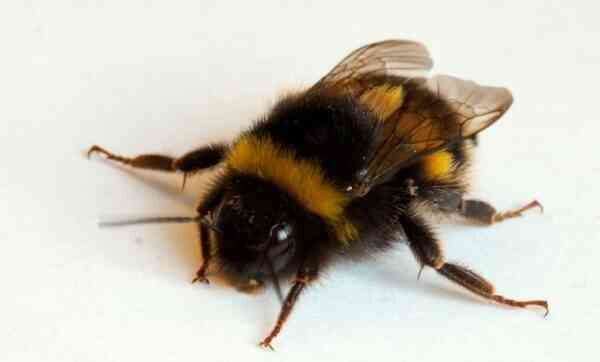A solid deep bass buzz means that a bumblebee is somewhere nearby. You should not be afraid of this insect, despite its intimidating sting – bumblebees are usually not aggressive, and they will never attack people first if they are not disturbed once again. But if you are still unlucky, you should keep in mind that their venom is quite unpleasant, perhaps even more unpleasant than bee venom, not to mention that it can cause serious consequences for people with allergies.
Interesting facts about bumblebees
- An adult can be up to 2.5 centimeters long.
- There are about 300 species of bumblebees in nature.
- They were introduced to Australia and New Zealand relatively recently.
- The closest relatives of bumblebees are bees (interesting facts about bees).
- The wool covering the body of a bumblebee helps this insect to keep warm, reducing heat loss by half.
- The first bumblebees appeared on Earth about 30 million years ago.
- Their females are usually larger than males.
- The temperature of the bumblebee body is as much as 40 degrees.
- These insects can keep warm by quickly contracting the pectoral muscles, but they can only do this in flight.
- Bumblebees live in large families, numbering up to 200-300 individuals.
- One of the working bumblebees is a trumpeter. Every morning he flies out of the nest first and wakes up the rest with a special buzz.
- The bumblebee family lives for one summer. In autumn, all insects die, except for a few fertilized young queens, which hibernate and in April begin to build a nest, lay eggs and start a new family.
- Bumblebees, like bees, have poison, but, unlike bees, bumblebees do not leave a sting as a victim.
- There is an industry called bumblebee farming – breeding bumblebees for pollination of crops in order to increase their yield. These insects have become popular as pollinators due to their low aggressiveness (interesting facts about insects).
- Cuckoo bumblebees differ from their other relatives in a parasitic way of life. They place their larvae in the hives of other bumblebees, and also disguise themselves as them with the help of coloration.
- There is a common misconception that the bumblebee flies contrary to the laws of aerodynamics. It probably originated at the beginning of the 20th century when trying to apply lift calculations intended for aircraft to a bumblebee. Physicist Zheng Jane Wang from Cornell University, USA, proved that the flight of these insects does not violate the laws of physics.
- When flying, the bumblebee develops speeds of up to 18 km/h.
- The bumblebee’s nest scientifically called «bombidarius».
- Bumblebees in cold weather together «buzz» in the nest, actually flying in place, working with muscles, warming up and thereby raising the temperature inside to a comfortable 30-35 ° C.
- On hot days, you can see a bumblebee at the entrance to the nest, which flutters its wings. He is ventilating the nest.
